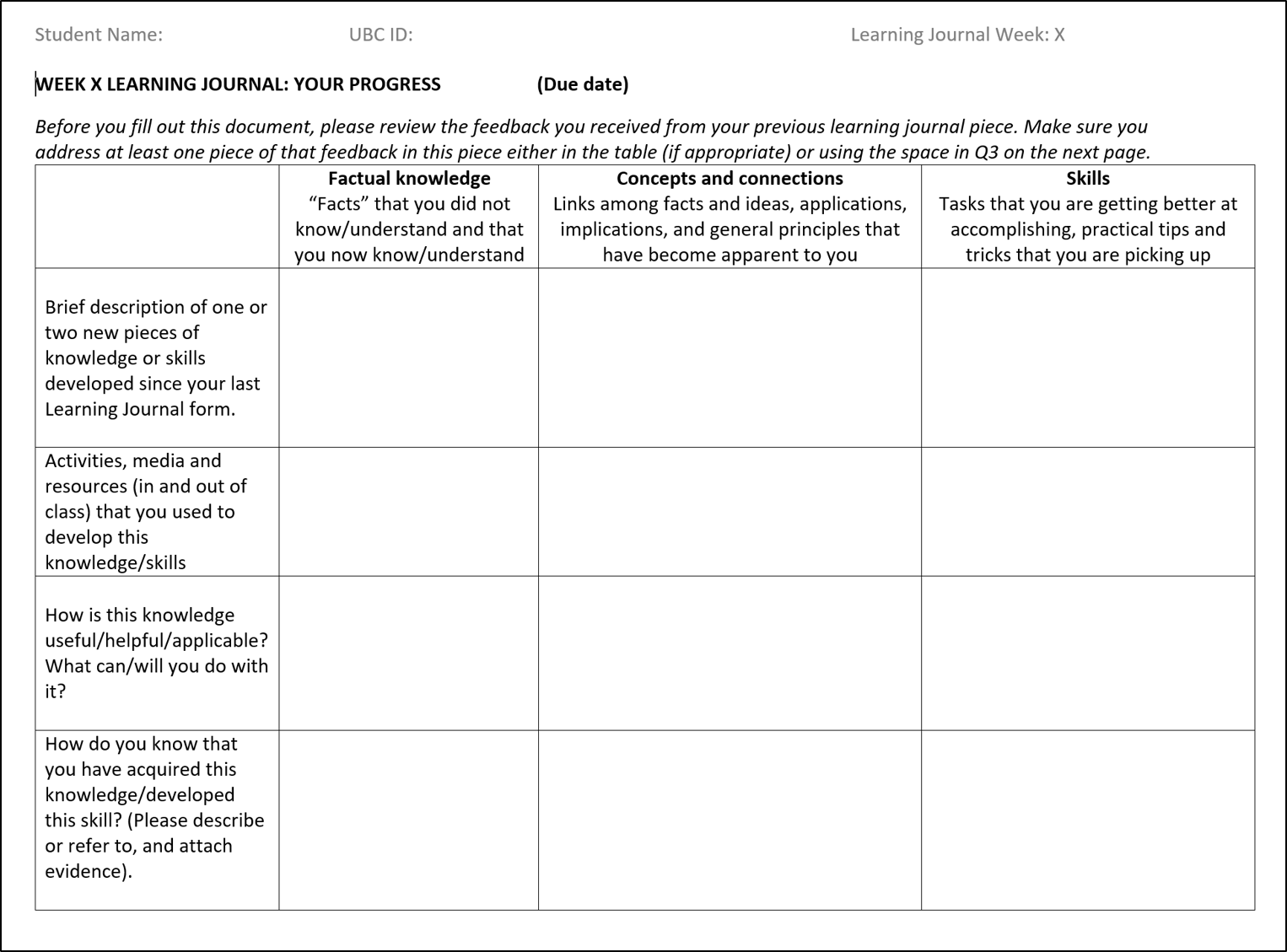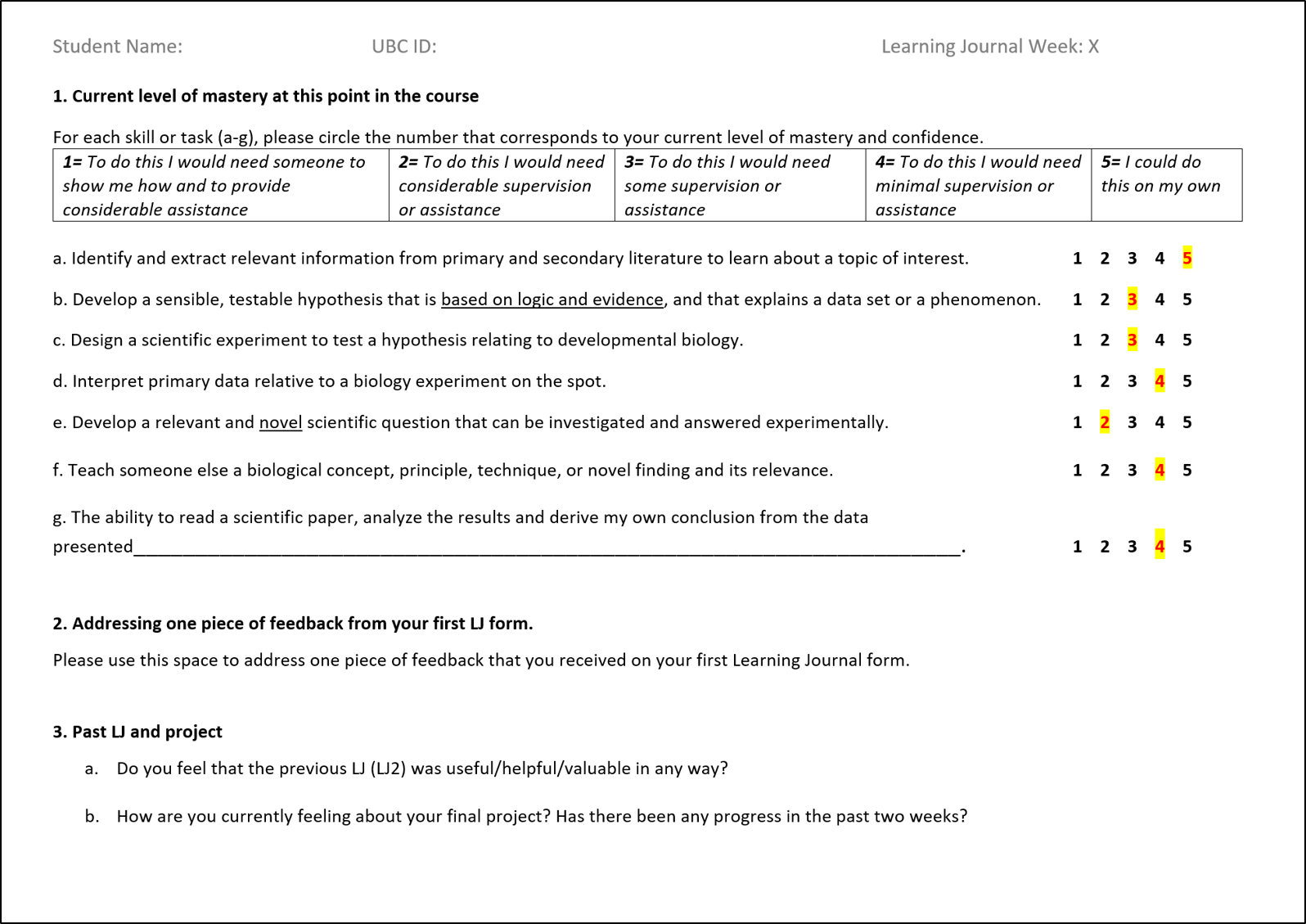
Pam Kalas has been incorporating various student metacognitive activities in her courses for the past several years. Below, Pam describes the types of metacognitive activities she uses, what motivated her to start using them, how students have responded, and what she has learned along the way. She also offers some example metacognition questions from the Big Learning Journal assignment she has previously used in her course.
What metacognitive activities do you include in your courses?
I often use individual written assignments where students document and reflect on their learning or on their experience with a course activity. I also use oral questions during class where I invite students to think about a problem that they have just finished solving, or a (biology) question that they have just worked on, and articulate the strategy and/or thought process that they used.
What motivated you to include these metacognition activities in your course?
Initially, my goal was simply to “force” students to stop and think. I find that the focus on measurable learning objectives and the desire to incorporate a lot of active learning and/or a lot of content into our lessons can lead to a situation where students are pushed to complete task after task, practice, practice, practice, with no time to truly think about what it is that they are doing or learning.
As I started looking into metacognitive activities, I realized that developing one’s metacognitive skills can have multiple additional benefits, including identifying one’s strengths and weaknesses and evaluating one’s process. Reflecting on how we tackled a problem or how we went about answering a question – what tools we used, how successful the strategy was, and so on – is not that different from what we do in science when we conduct an experiment. We keep lab notes so that we have a record of what we did, what worked, and what did not, so that next time we run the experiment, we know what to do and what to avoid.
How have the students responded to these activities?
The first few years that I used these activities, especially in upper-level courses, students were a little disoriented and nervous about “not doing it right”. Nowadays they generally seem comfortable with these activities, likely because they have done similar ones in at least one previous course. In terms of what students have produced in their written assignments, I continue to be amazed at the depth with which some students think about their learning, the course content, and even some big philosophical topics. Overall, I would say that the response has been very positive.
What did you learn about your students?
I find that with every activity I learn something about at least some of the students – how they think about some of the course material, how they experienced or have experienced one of the activities, or what their circumstances are. In some cases, it was through a metacognitive activity that I realized that a particular student should be granted some accommodations, or that we could easily help solve an issue that a student was struggling with.
The activity shown below (Big Learning Journal) was probably the biggest eye-opener for me in terms of how students identify and assess their own learning. For example, I found out that a majority of students took concepts as facts; this may not seem like a big issue, but here I was, telling them to not focus on learning fact after fact, but to focus on concepts instead, thinking that they would be able to tell the difference! I also discovered that while some students used excellent indicators to determine that they had learned something, others left me completely baffled. No wonder so many students could not understand why they were doing poorly in the course even though they felt they were learning everything!
What advice do you have for other instructors who are interested in using similar metacognitive activities in their own courses?
I think a great way to start is to reach out to colleagues who are using metacognitive activities – someone may already have an activity that would work in your class, or something that could be easily modified. Whatever you do, don’t use assignments as long as my Big Learning Journal! It takes a lot of time for the students to complete, and a lot of time for us to mark and comment on. Personally, I have not used it in years, but it often serves as a source of inspiration for activity prompts.
Big Learning Journal:

